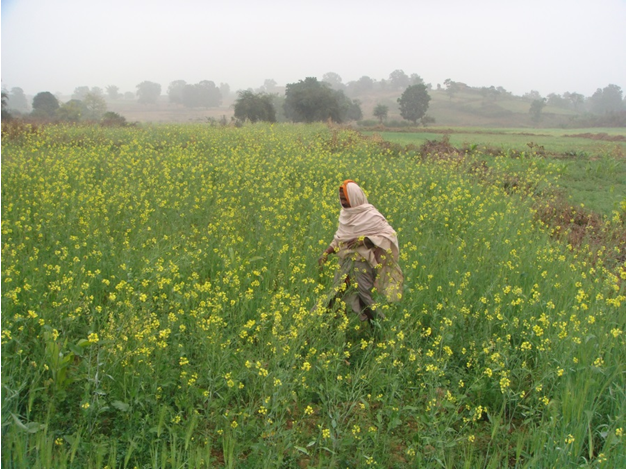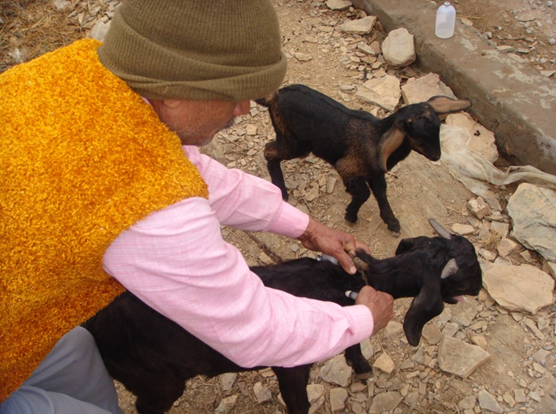Ensuring Livelihood Security through Sustainable Farming System

A mustard farm in NAIP project

Demonstration and distribution of equipment for removal of weeds

Improved breed of goats
Funding Agency: National Agricultural Innovation Project (NAIP)
Period: 2008-2014
Banwasi Seva Ashram was a partner in this multi-institution project led by Prof. J. S. Bohra from the Institute of Agricultural Sciences at Banaras Hindu University (B.H.U.), Varanasi. The main objectives of the project were
- Development of an economically feasible, socially acceptable and sustainable farming system particularly for the poor/ marginal/ tribal population of the Vindhya region
- Conservation and augmentation of a forest based production system and indigenous crop varieties in the Vindhya region
Banwasi SevaAshram was involved in the grass-root level implementation of the project in 12 selected villages in the Ashram area (Myorpur block). After an initial survey of farmer families in the villages, local committees were formed through election for effective implementation of the proposed development programmes. The project implementation involved various activities such as
- Distribution of seeds (varieties of corn, sesame, cereals such as urad, moong, arhar, vegetables) that need less water and less time for production, equipment for drip irrigation systems and removal of weeds.
- Training of the local farmers (in association with experts from B.H.U.) on various aspects of agriculture such as planned use of fertilisers, effective methods of sowing (direct sowing), weed removal, production of seeds, development of a nursery, tree plantation, fodder storage and maintenance of the drip irrigation systems.
- Distribution of improved varieties of goats and hens that are less prone to diseases
- Conducting of training programmes on animal husbandry, inoculation of animals and sensitising of farmers about various animal related diseases.
- Training of the village women in skills that can support the agricultural income (such as tailoring, making soaps and detergents, Andi-Silk rearing and spinning, and other home crafts like making incense sticks, Besan, Sattu flour).
- Training farmers in generating side income through black-smithy, operating an oil extraction unit and a flour mill.
A major outcome of the project was significant increase in the yield of crops and vegetables in the project villages. Prior to the implementation of the project, the farmers could hardly survive for 5 to 6 months on the farm produce. This period got extended to a full year. In fact, the farmers in the project villages now have surplus vegetables, which are sold in the local market. More importantly, local people were trained in improved methods of agriculture and animal husbandry. They have acquired skills in cultivation during seasons other than the rainy season. There was a rapid decrease in untimely animal deaths (from about 750 during 2009 to about 25 in 2011) as fodder is now available in plenty and there is increased awareness about inoculation and animal diseases. Keeping of poultry and other domestic animals (goats and cows) for additional income is on the rise. The project villages now serve as development models for the neighbouring villages.
Prior to the project implementation, the villagers were often forced to seek labour jobs in cities for 7 to 8 months each year. Also, village women used to collect firewood and sell it in the market. Now the women sell vegetables produce from their backyard in the local market. Thus, another important outcome of the project is decline in the movement of the villagers to neighbouring towns and cities in search of jobs
